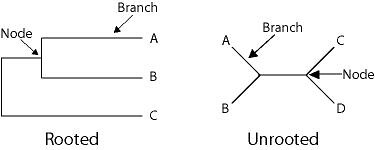It's that time of the year again, when the snow begins to fall, houses are outlined by white lights, and old white men don brightly colored sports coats. No, I'm not talking about Christmakwanzakah -- it's college football's bowl season! (Also known as "The Single Worst Way to Decide a National Champion".) This year, the
Bowl Championship Series (BCS) lucked out and
only two teams finished with undefeated records. If only it were always so easy.
In the previous two years, the BCS has seen
three teams finish undefeated and
only one team finish undefeated. In this current system (better than
what existed prior to the BCS, worse than
what we would have in an ideal world) a
mixture of human voters and computer algorithms decide the top two teams in the nation (in addition to ranking the top 25 teams). These two teams play each other in early January for the right to be called the
ESPN/USA Today/Coaches Poll/BCS national champion, and get to keep this pretty crystal trophy:
In situations where there are more than two teams that can legitimately claim the right to play in this game, we have what can be lightly referred to as "controversy". This year, only
Texas and
USC finished the regular season with unblemished records, removing any doubt regarding who should play in the national championship game. This, however, does not mean that the BCS is devoid of controversy, as there are 3
other high payout bowl games involved. The participants in the four games (the national championship and the three other games) are determined as follows:
- 6 automatic invitations: The six conferences involved (the Big East, ACC, SEC, Big Ten, Big 12, PAC10) each get an automatic invitation for their conference champion.
- Other automatic invitations: If a team from one of the BCS conferences does not win its conference, but finishes in the top four in the BCS standings, they get an automatic invitation to one of the BCS games. If a team from a non-BCS conference finishes in the top six in the BCS standings, they get an automatic invitation.
- At large invitations: Finally, if there are any invitations remaining, any other team that finishes in the top twelve in the BCS standings can be invited to a BCS game.
This year, after the automatic invitations were handed out for conference champions, one non-BCS team (Notre Dame) finished sixth in the BCS standings, earning an automatic invitation. Additionally, a team from a BCS conference that did not win its conference (Ohio State) finished fourth in the standings and earned the final automatic bid. This means that there were no at large invitations available, much to the
University of Oregon's dismay. You see, they finished fifth in the final rankings, but were not one of the eight teams chosen to play in a BCS game due to eight automatic invitations being handed out.
There isn't much Oregon can do about being left out, but is it possible for more than eight teams to qualify for BCS bowl games? Imagine the following scenario:
- The top two teams in the BCS poll automatically qualify for the national championship, but one of the teams fails to win its conference (it has happened before) -- 2 bids
- Another bid is given to the team that won the conference that one of the top two teams did not win, and four other bids are given to each of the other conference winners -- 5 bids
- One other non-conference champion finishes in the top four (like Ohio State did this year), and a team from a non-BCS conference finishes in the top six (like Notre Dame this year, or Utah last season) -- 2 bids
That's nine bids for eight available positions (there are other possible combinations that I'll leave for the reader to figure out). Remember, being a conference champion says nothing about where you rank in the BCS poll (this year, the six conference champions finished ranked 1, 2, 3, 7, 10, and 22 in the final poll). Considering that all of the possible events needed to cause a total breakdown of the BCS have occurred at least once, this does not seem like it's too much of a stretch.
So, what can the BCS do to remedy this? Next year, there will be an extra game, which means two more teams will qualify (ten total). Is it possible for more than ten teams to automatically qualify for BCS games?
- The six conference champions automatically qualify, but only one of those teams is ranked in the top six in the BCS rankings, and none are ranked in the top two -- 6 bids
- Both teams ranked 1 and 2 fail to win their conference championship -- 2 bids
- One of the following combinations: (a) 2 non-conference champions finish ranked 3 & 4, and at least one non-BCS team finishes ranked 5 or 6; (b) at least one non-conference champion finishes ranked 3 or 4, and 2 non-BCS teams finish ranked 5 & 6 -- at least 3 bids
Ok, so this is more of a stretch than the first scenario, but it's still theoretically possible. What's important is we have shown that there is a fatal flaw in the BCS without even invoking the problems of picking the national champion -- there may simply be more teams automatically qualifying for BCS games than there are spaces for those teams in the games.
Of course, picking only two teams to play for the national championship only works in seasons in which two teams have better records than all other teams, and this only happens when exactly two teams finish with undefeated records. Some people have suggested a "
plus one" system, in which an extra game is played after the regular bowl season. This system would not work in seasons in which there are two obvious choices (for example, this year) because it seems absurd to play an extra game -- just let those top two teams play for the national championship.
The only remedy that would work in all scenarios is a simple playoff between the top teams in the nation. This could be a four team playoff with the top 4 teams in the BCS rankings, a 6 team playoff with the top six teams (the top two teams get a first round bye), or an 8 team playoff (picking teams just as they are done with the current system, only eliminating the fatal flaw somehow). Why don't they do this (there are playoffs in every other collegiate sport in the United States, including at the lower levels of college football)? Because the university presidents claim that the additional games due to a playoff would detract from the time the players should devote toward academics. Oh, the bitter-sweet taste of irony!
I apologize if you expected this post to contain anything relating to evolution or genetics. This was far to important to not post.


















